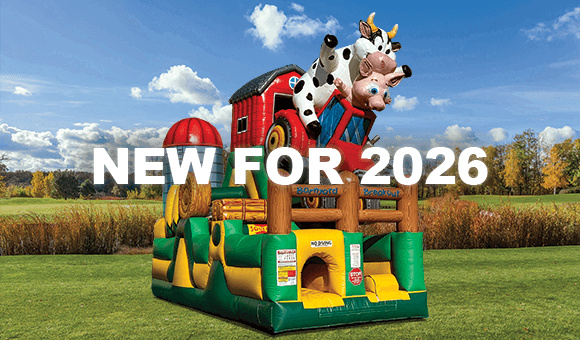April 27th, 2017 | Robert Field
In recent years, it is estimated that there were more than 200,000 injuries annually on public playgrounds across the country that required emergency room treatment.
Even though there is not a current accurate report separating out the number of injuries related to inflatable devices from other amusement related injuries, patrons falling while entering or exiting an inflatable device is a major concern for the USCPSC (The United States Consumer Products Safety Commission) and the ASTM (Association for Standard Testing Methods). Because of this concern, new standards have been created to protect patrons from these types of injuries with the use of tested Impact Mats around the ingress and egress areas of an inflatable device along with any portion of the device with a wall or barrier height less than 36 inches.
These areas have been designated as “Use Zones” by many in the amusement industry — The surface under and around a piece of equipment onto which a child falling from or exiting from the equipment would be expected to land.
Regulators including amusement ride inspectors need to be assured the impact mats being used by inflatable operators have been tested along with the requirements for the standard regulating them. The operator must maintain a certificate of compliance testing by the manufacture of the impact mat, or the impact mat itself must carry the testing certification by the testing facility performing the test based on the testing procedure outline in the ASTM standard.
ASTM Requirement for Impact Attenuation Materials:
It is imperative that all Impact Matting used around inflatable devices has met the required testing per ASTM testing requirements. In the event of an incident causing an injury to any patron using your inflatable device, make sure the Impact you have chosen for your device has bee officially tested by an approved independent testing facility with documentation supporting the test results.
Landing areas around inflatable amusement devices shall meet at least one of the following criteria:
(a) The landing areas shall be covered by impact mats manufactured to meet the impact attenuation testing criteria in section A3.2.
(b) The indoor surfacing in the landing areas shall be manufactured to meet the impact attenuation testing criteria in section A3.2.
(c) The natural or artificial outdoor surfacing in the landing areas shall conform to the impact attenuation requirements in F1292.
A3.2 Lab Test for Mats or Flooring in Landing Areas
A3.2.1 Mats or flooring used in landing areas shall limit the g-max (peak acceleration) to less than an average of 100 when a representative sample is tested in accordance with Test Method F355 using a 20 lb. (9.09 kg) flathead (Missile A).
A3.2.2 Missile drop height shall be equal to the maximum free height of fall (see 5.12.7) with a tolerance of +1%, -0. Typically, the maximum free height of fall for an inflatable device is 30” (.76m).
A3.2.3 Each sample shall be tested three times, with each drop being within five minutes of each other. A3.2.4 Determine the average g-max score by averaging the g-max scores from the second and third drops. A3.2.5 Representative samples shall be tested on an iron anvil, or concrete substrate.
A3.2.6 The testing positions for each sample shall be determined by the attenuation material manufacturer. A3.2.7 The temperature of the impact attenuation materials shall be 68° +/- 18°F (20° +/- 10°C).

















